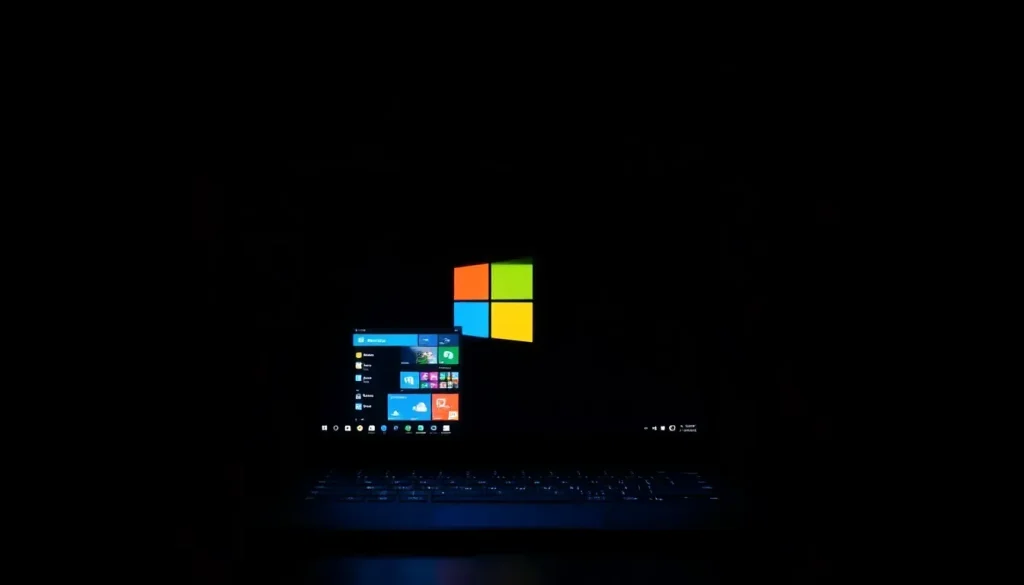Millions Still Using Windows 10 as Support Deadline Approaches

The countdown has begun for millions of Windows 10 users as the deadline for support looms. With only a few years left before Microsoft officially ends assistance for this operating system, users are faced with a crucial decision: upgrade or potentially expose themselves to security risks. Understanding the implications of this transition is vital for anyone relying on Windows 10.
- Understanding the End of Support for Windows 10
- The User Landscape: Who is Still Using Windows 10?
- Risks of Staying with Windows 10
- Challenges to Upgrading to Windows 11
- Organizational Dilemmas: Why Businesses Hesitate to Upgrade
- What Can Users Do Before the Deadline?
- Resources for Transitioning
- Conclusion: The Importance of Staying Updated
Understanding the End of Support for Windows 10
On October 14, 2025, Microsoft will stop providing technical support and security updates for Windows 10. This marks a significant turning point for users, as any system still operating on this version after that date will become increasingly vulnerable to security threats.
The cessation of updates means that users will not receive essential security patches that defend against new viruses, malware, and software vulnerabilities. This poses a serious risk, especially for the estimated five million individuals in the UK still using Windows 10.
The User Landscape: Who is Still Using Windows 10?
A recent survey conducted by the consumer advocate organization Which? revealed some troubling statistics regarding Windows 10 users:
- Over 25% of participants intend to continue using Windows 10, showing reluctance to upgrade.
- 39% of respondents plan to upgrade to newer devices that can support Windows 11.
- Many users express concern over the compatibility of their existing hardware with new operating systems.
This data highlights a significant trend: a sizable portion of users are either unaware of the impending deadline or unwilling to adapt to newer technology.
Risks of Staying with Windows 10
Choosing to remain on Windows 10 after the end-of-support deadline poses several risks:
- Security Vulnerabilities: Unsupported software becomes a primary target for cybercriminals.
- Lack of Updates: No new features or performance enhancements will be available.
- Compatibility Issues: As software evolves, older systems may struggle to run newer applications.
Staying with Windows 10 can leave users open to various security threats. Hackers are known to exploit weaknesses in outdated software, making it essential for users to reconsider their decision to stick with an unsupported operating system.
Challenges to Upgrading to Windows 11
For many users, the transition to Windows 11 is not as straightforward as it seems. The requirements for this upgrade can be a barrier for those using older PCs. Key requirements include:
- UEFI Firmware: Many older machines do not support this necessary boot environment.
- Trusted Platform Module (TPM) 2.0: This security feature is absent in many devices.
- Secure Boot: A requirement that ensures only trusted software loads during the startup process.
The absence of these features means that a significant number of users may be unable to upgrade their current machines, leading to a dilemma: Should they discard perfectly functional hardware or risk operating without security updates?
Organizational Dilemmas: Why Businesses Hesitate to Upgrade
Large organizations often find themselves in a particularly challenging situation when it comes to upgrading from Windows 10. Several factors contribute to their reluctance:
- Legacy Software: Many businesses rely on specialized applications that may not be compatible with Windows 11.
- Budget Constraints: The cost of new hardware and training can be prohibitive.
- Operational Disruption: Transitioning to a new system can disrupt workflow and productivity.
This hesitation can result in a systemic problem, where entire sectors continue to rely on outdated technology, significantly increasing their risk of cyber threats.
What Can Users Do Before the Deadline?
For those choosing to remain with Windows 10, it is critical to take proactive steps before the support deadline approaches:
- Back Up Data: Ensure all important files are securely stored before any potential issues arise.
- Explore Upgrade Options: Research hardware that meets Windows 11 requirements.
- Redeem Extended Support: Users may be eligible for an additional year of security updates—make sure to take advantage of this option.
These actions can help mitigate some risks associated with staying on an unsupported operating system.
Resources for Transitioning
Several resources can assist users in making the transition from Windows 10 to Windows 11, including:
- Windows 10 support is ending: Here is what you can do!
- 7 Days Left Until Windows 10 EOL | Bugs That May Never Be ...
- Why the end of support for Windows 10 is uniquely troubling
Taking advantage of these resources can provide valuable insights into the upgrade process and the benefits of transitioning to a more secure operating system.
Conclusion: The Importance of Staying Updated
As Microsoft's support for Windows 10 draws to an end, users must recognize the importance of keeping their systems updated. With the ever-evolving landscape of cybersecurity threats, remaining on an outdated operating system is a gamble that could lead to severe consequences. By understanding the challenges and taking proactive measures, users can ensure their digital safety and transition smoothly to newer technologies.




Leave a Reply